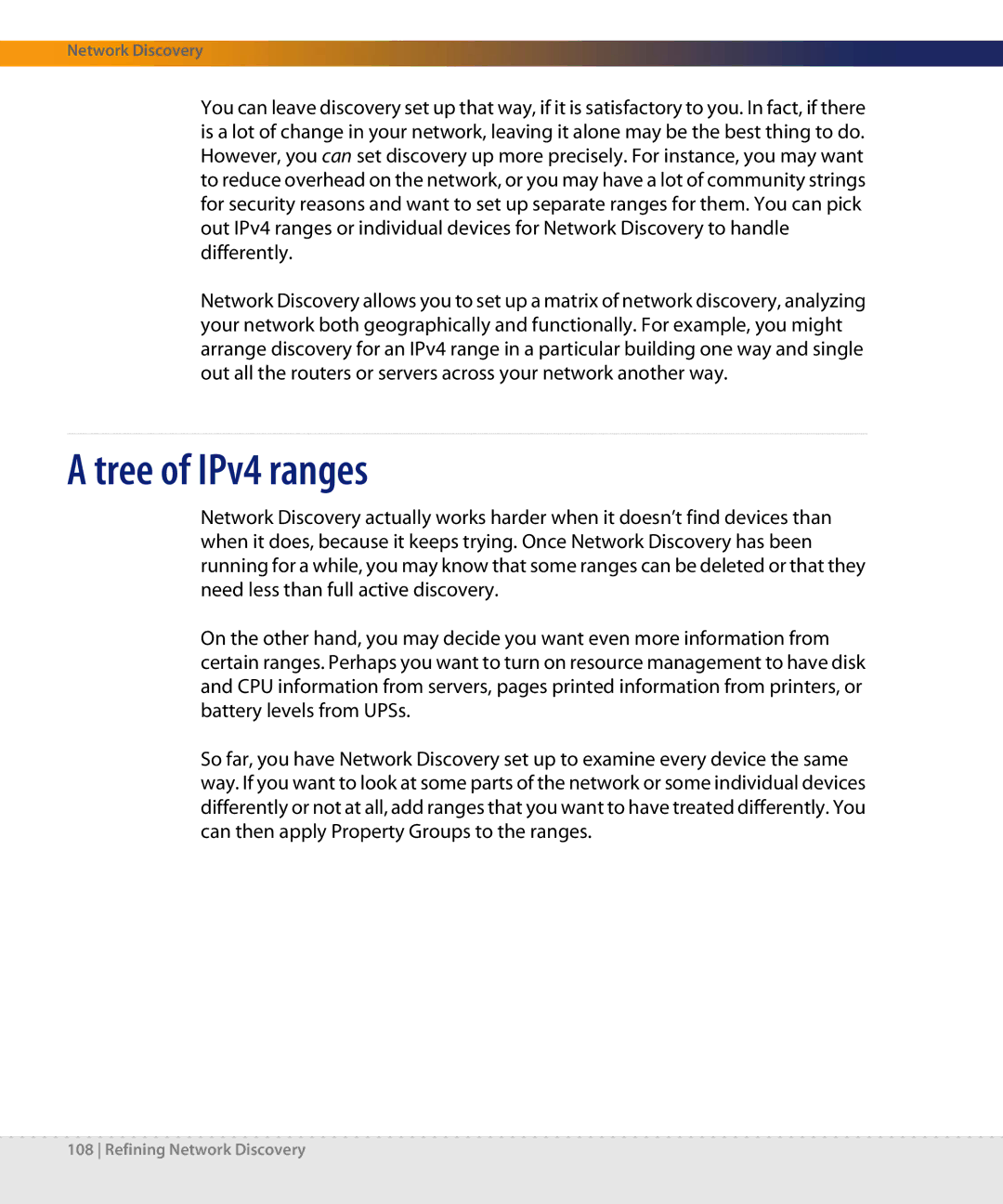
Network Discovery
You can leave discovery set up that way, if it is satisfactory to you. In fact, if there is a lot of change in your network, leaving it alone may be the best thing to do. However, you can set discovery up more precisely. For instance, you may want to reduce overhead on the network, or you may have a lot of community strings for security reasons and want to set up separate ranges for them. You can pick out IPv4 ranges or individual devices for Network Discovery to handle differently.
Network Discovery allows you to set up a matrix of network discovery, analyzing your network both geographically and functionally. For example, you might arrange discovery for an IPv4 range in a particular building one way and single out all the routers or servers across your network another way.
A tree of IPv4 ranges
Network Discovery actually works harder when it doesn’t find devices than when it does, because it keeps trying. Once Network Discovery has been running for a while, you may know that some ranges can be deleted or that they need less than full active discovery.
On the other hand, you may decide you want even more information from certain ranges. Perhaps you want to turn on resource management to have disk and CPU information from servers, pages printed information from printers, or battery levels from UPSs.
So far, you have Network Discovery set up to examine every device the same way. If you want to look at some parts of the network or some individual devices differently or not at all, add ranges that you want to have treated differently. You can then apply Property Groups to the ranges.
108 Refining Network Discovery
